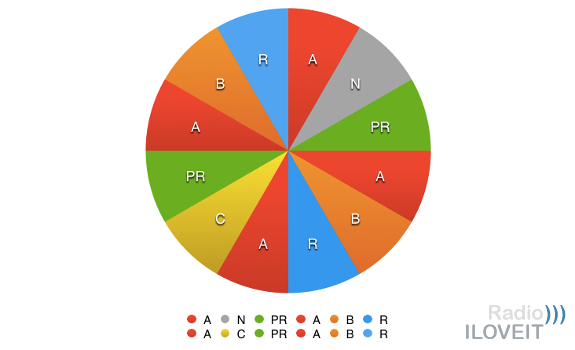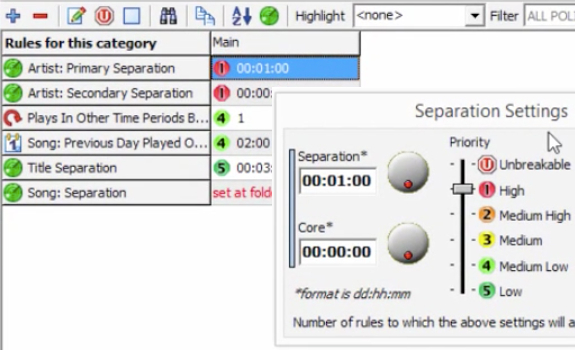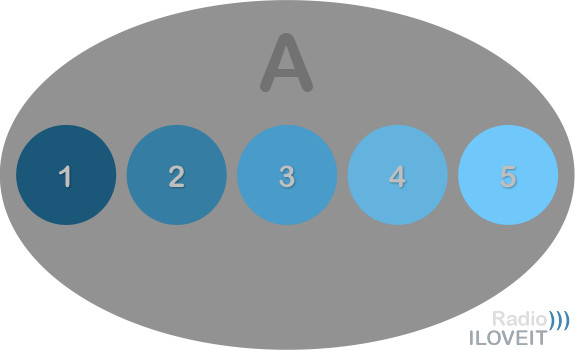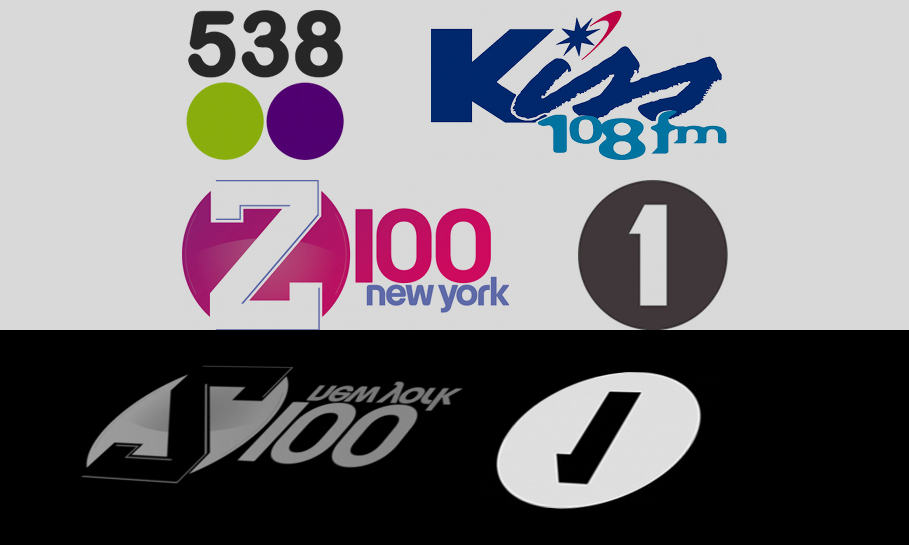Which songs you play in which rotation is not the only thing that matters. In which order you’ll play your songs is just as important, as music scheduling combines science & art.
Following part 1 of our interview with Robert Johansson on music scheduling for Contemporary Hit Radio formats, we continue our good talk about how to make your Top 40 radio station a massive hit. Which music categories are essential, and which category sequences are effective? We’ll answer that, and more, in this post.
“Never play a normal Recurrent back to back with a new song”

Play a new song next to a Power Current / Power Recurrent (format & image: Thomas Giger)
Have a ‘New’ category
How would you set up music categories for a CHR station?
“I use As, Bs and Cs, Stay Currents and Recurrents. Songs from the last categories are usually scheduled with less rules, and are the glue to form the mix. You need some kind of freshness and variety. If you’re just going to play the same 25 songs, then it’s easy for someone to turn to Spotify”, says Johansson, who’s living in Sweden (where the streaming service is huge). The difference between Stay-Currents and Recurrents is that songs from the first category have a younger age and also a higher rotation than songs from the second one. After 8-12 months, many Stay-Currents become Recurrents (when they qualify). How long recurrent titles will remain active also depends on the total number of tracks: “When you are having only 100 songs in your library, the songs would not last as long.” Apart from A, B & C currents, he’s using a dedicated category for new music, in order to separate new releases from other songs.
 Split climbing & decreasing secondaries
Split climbing & decreasing secondaries
Should one separate secondary currents on their way up vs. down? “I really like the concept of dividing B songs into two levels; ‘B up’ and ‘B down’, so each hour will have an even balance of era. If you would play one sweep with 2 really new B songs, and another one with 2 very old B songs, the station could feel really different.”
Surround unfamiliar with familiar
Johansson thinks that while playing new music can drive listener passion and benefit station images (for curating new music), it’s important to embed new songs well. It’s good to have an N category for (unfamiliar) new releases apart from A, B and C categories for (familiar) current hits: “A special category for new songs can make sure that I play something familiar next to a new song, like a Power Recurrent or A-Current. I’d never play a normal Recurrent back to back with a new song. If I’m playing 2 B songs on the way up, and they come back to back to each other or I’m playing a new song back to back with a B song on the way up, then again the feeling of the station could be very different compared to another part where I’m playing 1 old B song back to back with an old Recurrent.”
“The more rules, the harder it will be for your software”

Optimizing categories & clocks helps you stick to essential rules (image: YouTube / Powergold)
Avoid music category diffusion
An essential point is to focus every category on a specific theme: “It’s crucial that each category really communicates what you want. If you spice up categories too much, it’s really hard to get a consequent music mix.” While some PDs and MDs like to use less music categories and less format clocks to achieve this consistent sound, Johansson thinks that more categories and more clocks give you more control over the music mix. “It’s easier to achieve the feeling that these songs will be played back to back with a type of song that it combines well with.” For example, you don’t want to follow a new release by a B song on the way up, as that may feel like playing two new songs in a row. Having enough differentiated categories and clock variants allows you to create a better music flow.
 Optimize quarter hour rotations
Optimize quarter hour rotations
The more categories you have, the higher probability you cause that a certain song is being scheduled in the same position in the hour. Or is that a matter of having more clocks to balance it? “You’re right, that’s the main reason why I like to have more clocks. With 4 different clocks in each daypart, you can rotate songs through many different quarter hours.”
Put song segues first
In his opinion, even more essential than song rotations are song sequences. “It’s more important to make sure that songs are played back to back with songs that they work with” (avoiding that, for example, 2 newer tracks are played after another, which can happen if you don’t have enough differentiated categories). “Of course, you can set rules with era fields and other parameters, but the more rules you have, the harder it will be for your software to schedule songs properly. Especially with today’s tighter playlists, format clocks and category structures are the best way to determine where your most played music is positioned.”
“Control the passion within the music categories”

Small categories with frequent exposure communicate category relevance (image: Thomas Giger)
Ensure music balance consistency
How important is it that each clock still has the same basic rhythm, from the argument of managing listener expectations? A PD might want to ‘teach’ listeners (on a subconscious level) what kind of music they can expect next. For example: that when they’re tuning in and not immediately hear a current hit, the following song is one. Could more clocks potentially cause more diffusion?
“When it comes to clocks, it’s always a combination of songs that do fit together. In one hour, a new song could be played before a hit song. In another hour, a new song could be played after a hit song. But you’re right. To maintain the basic structure with the most important categories is the number 1 thing. And meeting listener expectations that every other song is a hit, that’s definitely crucial.”
 Assign categories top down
Assign categories top down
When designing a new format clock, Johansson is using Excel to fill in slots based on the number of songs to play in each hour. A good way is to start with assigning most important (highest-rotating) categories to certain slots, then positioning additional (lower-rotating) categories around those. It’s practical to use a distinctive colour for each category.
Let categories communicate passion
“The easiest way would be if you just have an A, B, and C category, and then play A, B, A, C. But then the problem is: how will you control the passion within music categories? When you have a longer category, it’s hard to tell what it is about.” Most music research data show a “really, really big” difference in passion for the #1 song versus, for example, the # 20 song in the ranking. It’s common practice to include only 4 or 5 best-testing songs in the A list, in other words: limit the amount of power currents to 4 or 5, thus communicating that these are the most-played songs for a reason.
More music scheduling tips for Top 40 (CHR) radio stations & formats will follow in the upcoming part 3!






Add Your Comment